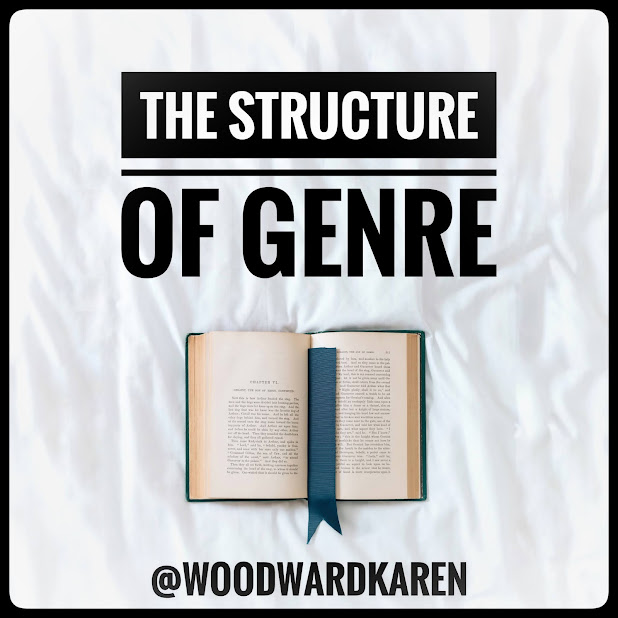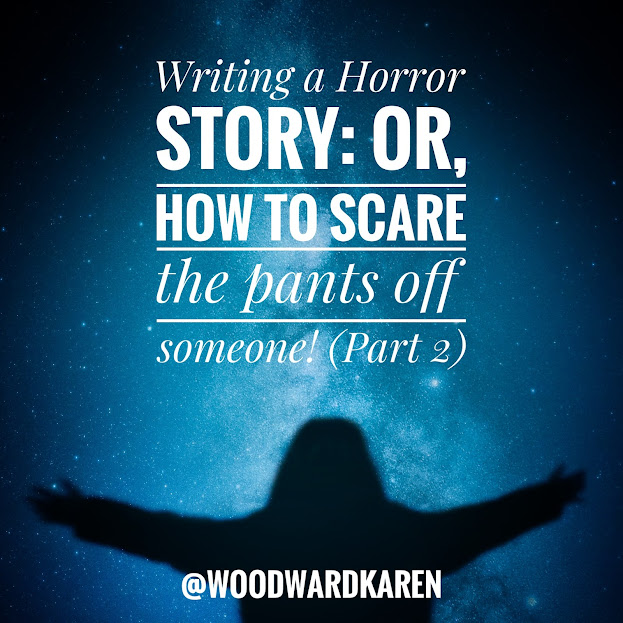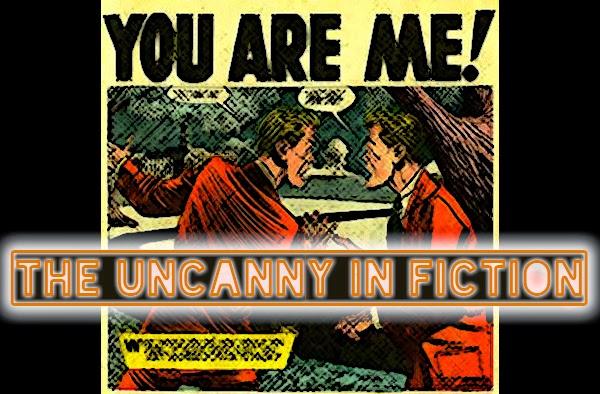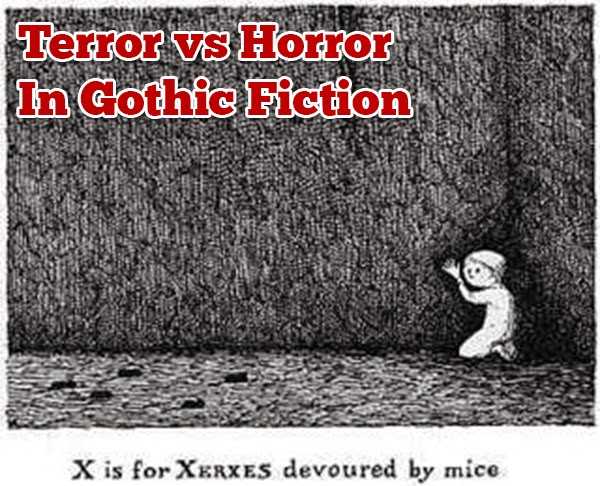8. Make the stakes clear.
This goes for any story, not just horror stories: make it clear what your character has to gain. Make it equally clear what they have to lose.
Why is this so important? If the reader doesn't know the stakes she can't fear loss. That's a problem because emotion—fear and anxiety—is exactly what we're trying to produce/create/invoke.
As Chuck Wendig writes: "Fear is built off of understanding consequences. We can be afraid of the unknown of the dark, but horror works best when we know that the dark is worth fearing."[1]
(Tip 11, below, makes a related point. It's important to give the audience an example of how bad your villain is. This not only helps establish the stakes for your hero, but it establishes the villain as someone to be feared.)
9. Create a horrific atmosphere, one that will prime a reader's fears.
One of the key elements in scaring readers—which is what a great horror story must do—is creating a scary atmosphere. Your goal here is to communicate raw emotion.
For me, there's something scary about being in a stairwell, the kind modern office buildings have, the kind that lock you in. You can't get to any other floor from the stairwell, you're trapped inside until you get to the bottom. Combine that with lights going out and strange noises drifting up and, for myself at least, that's one creepy setting.
10. Your character must have hope.
The negative stakes must be clear—the reader/viewer/listener must know how bad it can get—but it is equally important to give the character hope, hope that everything will turn out fine in the end, hope that they'll achieve their hearts desire. CW writes:
"[...] for horror to be horrific, it must also have hope. Unceasing and unflinching horror ceases to actually be horrific until we have its opposite present: that doesn’t mean that hope needs to win out. Horror always asks that question of which will win the day: the eyes of hope or the jaws of hell?"[1]
Usually it's the jaws, but the question needs to seem real and pressing.
11. Show the badness of the Big Bad.
CW writes that dread and revulsion are the beating heart that animates horror, they are the engine that drives (drags) a reader through a horror story.
Dread is about anticipation. Specifically, anticipation of all the nasty things that could happen to your character if they get caught by the monsters. This is why, often, there is a scene early on—a revolting one—that shows how bad the Big Bad can be.
For instance, the villain often does something heinously grotesque to a minor character. This is often played as a gross out scene but it serves a necessary function: it calibrates 'bad'.
That way, when your hero is put in jeopardy, your reader/audience has something nice, specific, and oh-so-gory to imagine.
(Of course, when the time comes, it won't just be bad—the audience is expecting that—it will be bad multiplied by 100.)
12. The gross out.
People like being grossed out.
I don't know why. It's something primal. Visceral.
This is true—I accept it as true—even though it isn't true for me. Though I must admit there is a certain oh-it's-an-accident-let's-see-what-happened quality to gross out scenes that's difficult to ignore. (Here's an example of what I mean, it's a scene from
Final Destination 5. It's
squicky; you've been warned.)
CW mentions, though, and I agree, that ...
"The Squick Factor is not actually a prerequisite for good horror. Some of the best and most insidious horror is devoid of any grossness at all: a great ghost story, for instance, is often without any blood-and-guts."[1]
Take, for example, the movie
Paranormal Activity. That movie was shot on a shoestring budget of—wait for it—
15,000 dollars. (To help put that in perspective,
Sharknado was made for a million and
that was considered shoestring.) They couldn't afford special effects and so there weren't any. All the truly hideous things happened offscreen, which worked wonderfully given that the movie was shot with stationary cameras.
This goes back to the earlier point about fear of the unknown. Our imaginations are the best special effect department in the world.
13. The longer the story, the less squicky it should be.
In a short story you can be vivid and in-your-face with the gore but it's impossible to sustain that pace, that intensity of revulsion, for an entire novel. CW writes:
"Horror all but demands you don’t pull your punches, but that kind of unceasing assault on one’s own senses and sanity cannot be easily sustained for a novel-length or film-length project. Hence: short fiction and short films do well to deliver the sharp shock that horror may require."[1]
14. Make them laugh, make them cry.
Weaving comedy into a horror may seem like a wacky idea at first, but think of Scream. Yes, the movie wasn't everyone's cup of tea, but one of the reasons for its success was its somewhat twisted sense of humor, as well as the self-mocking, self-referential, dialogue. CW writes:
"Horror and humor both work to stimulate that same place in our gutty-works, a place that defies explanation. Sometimes you don’t know why you think this thing is funny or that thing is scary. They just are. It’s why it’s hard to explain a horror story or a joke: you can’t explain it, you can only tell it. And both are told similarly: both have a setup, ask a question, and respond with a punch line or a twist."
Humor goes well with any kind of story. For example, Vince Gilligan, creator, writer and producer of the hit TV series
Breaking Bad thought of the show as a comedy. A black comedy, sure, but a comedy nevertheless. In one of the
Breaking Bad insider podcasts he mentioned that the writers tried to include something humorous in each scene.
15. Sex and death.
CW points out that another duo we often find in horror movies is sex and death. And, under the theory that opposites attract, it makes sense. Sex is ephemeral, transcendent, pleasurable while death is eternal, nullifying and getting there is often painful.
But sex also, in very real ways, contains death within it. As soon as we're born we're condemned to die. As CW writes:
"We all fear death and so sex—procreative and seductive—feels like an antidote to that, but then you also have the baggage where OMG SEX KILLS, whether it’s via a venereal disease or as part of the unwritten rules contained within a slasher film."
This is a bit off topic, but I thought the unwritten rules contained in a slasher film were marvelously parodied by Joss Whedon and Drew Goddard in their movie, The Cabin in the Woods. As you'll remember, the promiscuous blond had to be the first victim.
16. And now these three remain: why, who and what. But the greatest of these is what.
Today I was reading about something Lee Goldberg said at a recent writers' conference:
"Lee said, 'No one remembers the mystery plot of a Monk episode.' We shared a shocked look, sure that wasn’t true. Lee must be wrong. However, he went on to explain that mostly when fans of the series talk about a storyline, they say 'the one where the trash collection workers were on strike' or 'the one where Monk had a look-alike who was a crime boss.'
"His point was that as writers we often think that the backdrop of the story is secondary, but really it's vitally important to the story as a whole. If plot is 'what' the book is about, the backdrop or sub-plot is tightly hooked into 'who' the book is about. And together the what and who make the why, and that’s the trifecta that creates the richness in a series. It's what makes us remember a book and come back to a character."
"You write horror, you’re trying to shine a light in dark corners. Key word there is “trying”—the flashlight needs to be broken. A light too bright will burn the fear away—the beam must waver, the batteries half-dead, the bulb on the verge of popping like a glass blister. It’s like, what the light finds is so unpleasant, you can’t look at it for too long. Look too long it’ll burn out your sanity sensors. In this way, horror isn’t always concerned with the why or the how—but it is most certainly concerned with the what."[1]
17. Write about what scares you.
Let me leave you with CW's closing words:
"Horror needs to work on you, the author. You need to be troubled, a little unsettled, by your own material. Write about what scares you. Doesn’t matter what it is or how absurd—hell, some people think that being terrified of clowns is ridiculous, until you realize how many people find clowns spooky [...]. Dig deep into your own dark places. Tear off the manhole cover and stare down into the unanswered abyss. Speak to your own experiences, your own fears and frights. Shake up your anxieties and let them tumble onto the page. Because horror works best when horror is honest. The audience will feel that. The truth you bring to the genre will resonate, an eerie and unsettling echo that turns the mind upon itself."
If it doesn't scare you, if you're not just a little freaked out about how dark it is in the next room and ... wait. What was that noise?
(One moment, let me shut my door, I thought I heard something moving around the next room, but that's not possible. I'm the only one home and, besides, nothing human sounds like that. No matter, I'm sure it was only my imagination.)
Links/References










